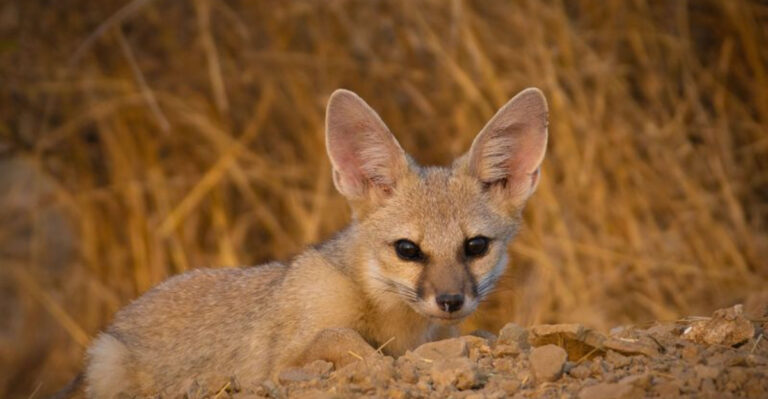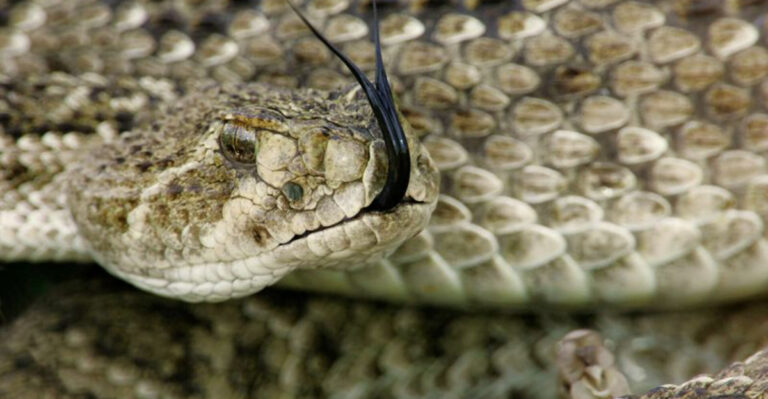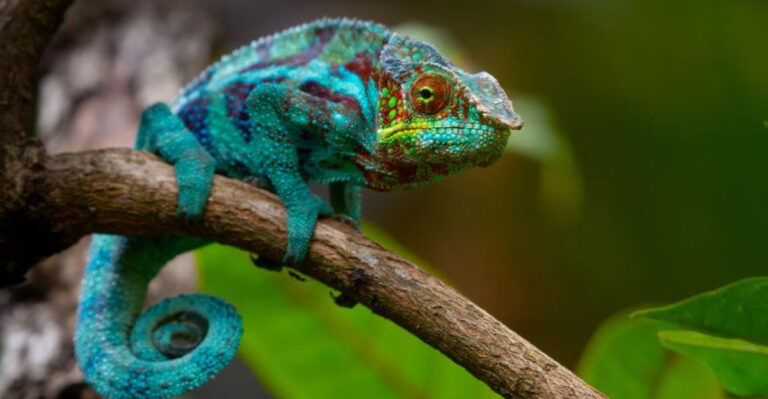A Simple Guide To Identifying An American Lady Butterfly
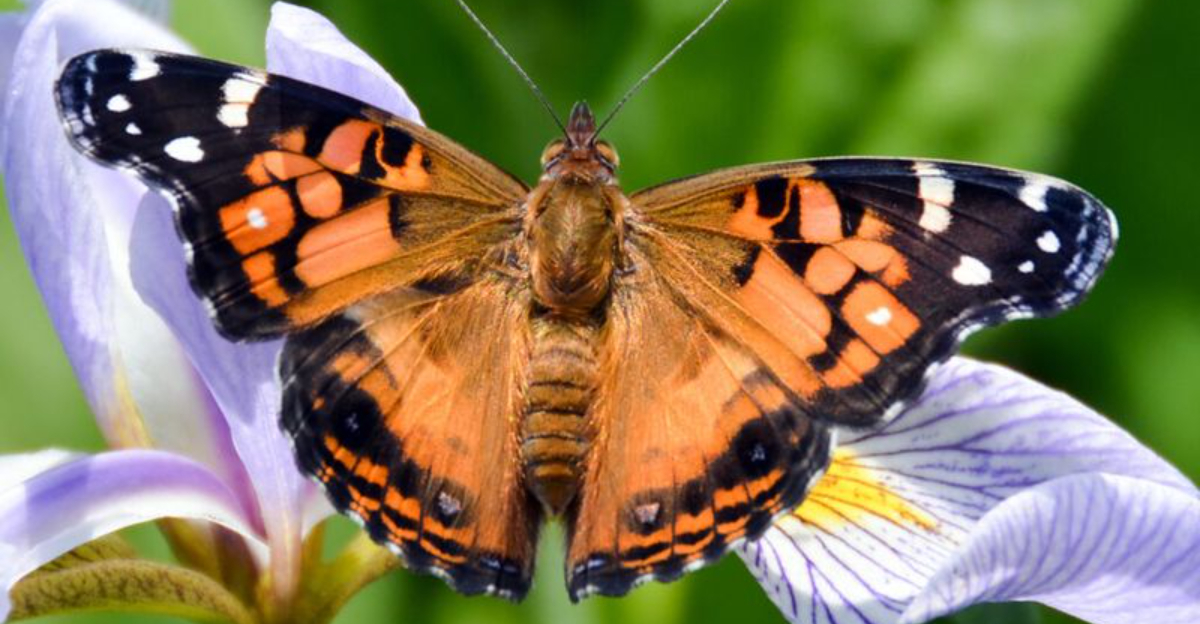
Have you ever spotted an orange butterfly fluttering around your garden and wondered what kind it was? The American Lady butterfly is a common and beautiful visitor to gardens across North America.
Learning to identify this distinctive butterfly can add joy to your outdoor experiences and help you appreciate the natural world around you.
1. Meet The American Lady Butterfly
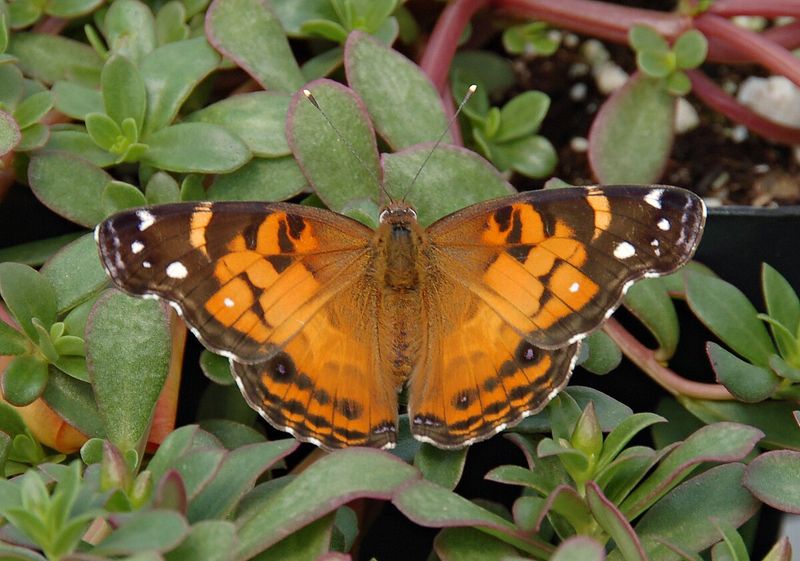
The American Lady (Vanessa virginiensis) stands out with its vibrant orange wings adorned with black markings. Native to North America, this medium-sized butterfly brightens gardens from Canada to Mexico.
While often confused with its cousins, its distinctive wing patterns make it a favorite among butterfly watchers.
2. American Lady Vs. Painted Lady: How To Tell Them Apart
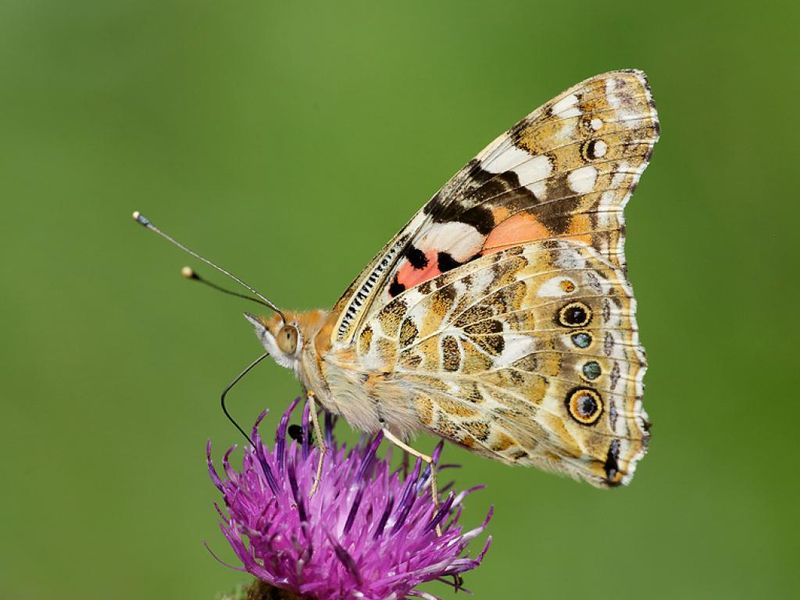
Look for the two large eyespots on the underwing – American Ladies have them, while Painted Ladies display four smaller spots. American Ladies also feature a white spot in the orange forewing section that’s missing in Painted Ladies.
The American Lady’s hindwing eyespots are more pronounced and fewer in number.
3. Size And Shape
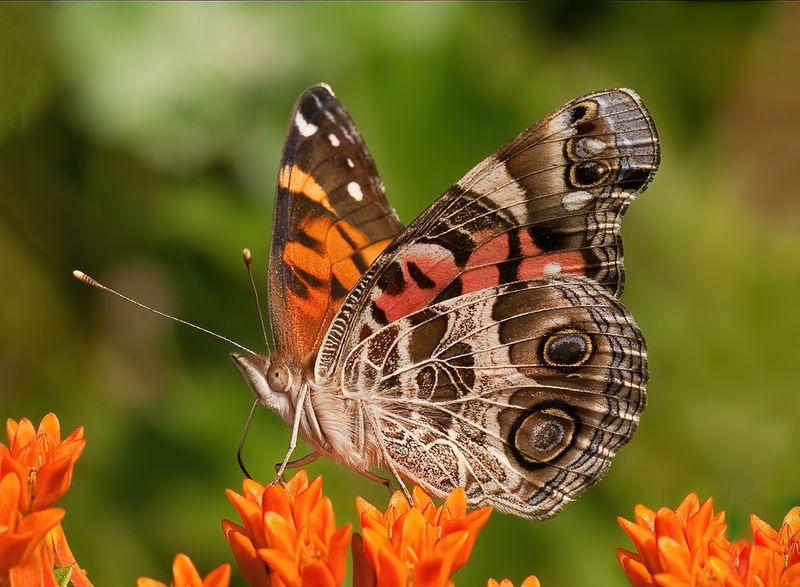
Measuring 1.75 to 2.5 inches across, American Lady butterflies fall into the medium-sized category. Their wings have a distinctive squared-off appearance at the forewing tips rather than rounded edges.
When perched, they often hold their wings flat or slightly open, showcasing their beautiful patterns.
4. Color And Patterns: Distinctive Markings To Look For
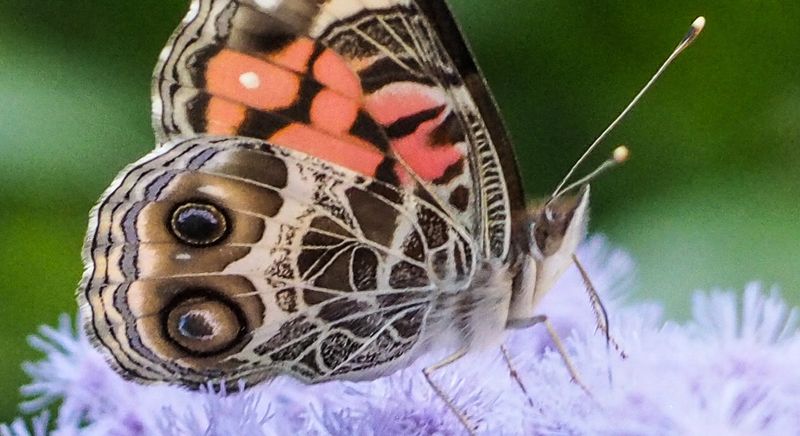
Burnt orange dominates the upper wings with black borders creating a stunning contrast. White spots decorate the black tips of the forewings, while intricate mottled patterns of brown, gray and white cover the underwings.
A small but telling white dot appears in the orange section of each forewing.
5. The Signature ‘Eyespots’ On The Underside Of The Wings
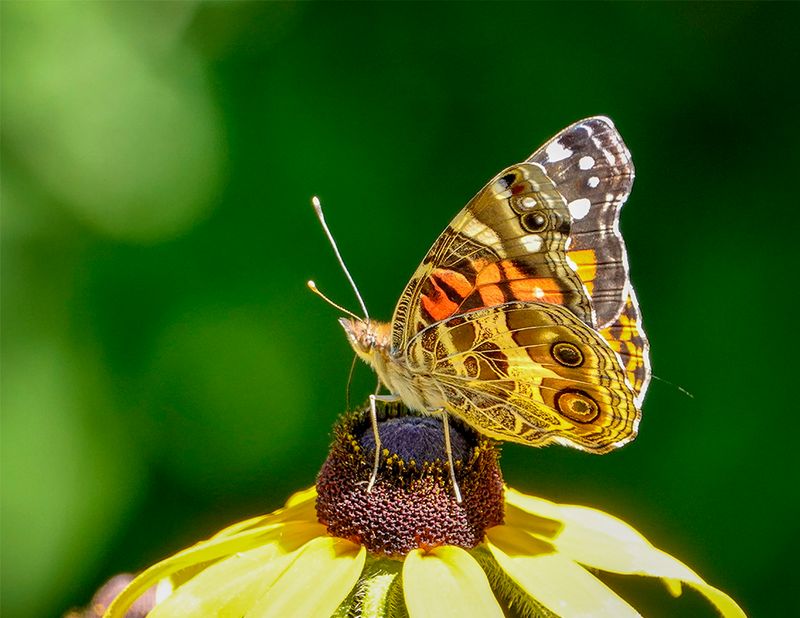
Two large cobalt blue centers surrounded by black rings characterize the hindwing eyespots. These distinctive markings serve as the butterfly’s primary defense mechanism, startling potential predators who mistake them for the eyes of a larger animal.
No other North American butterfly shares this exact eyespot pattern.
6. Where To Find American Lady Butterflies
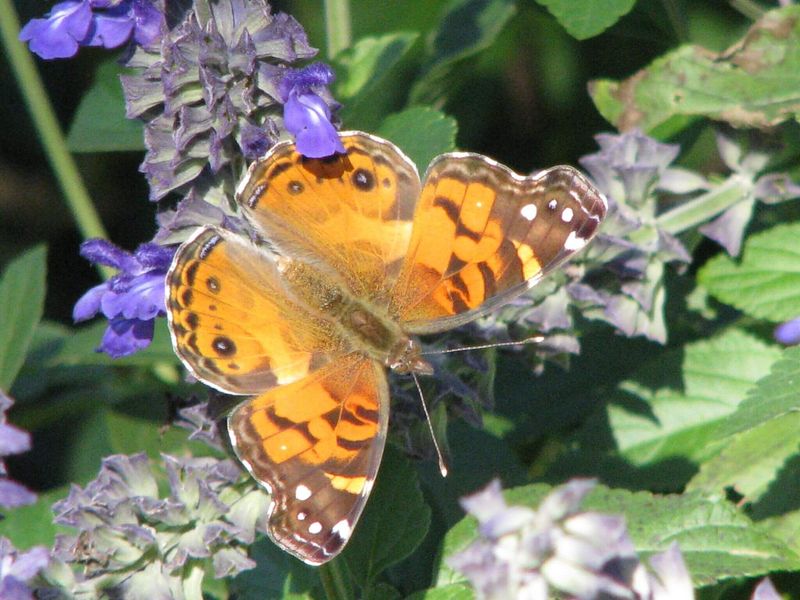
Open sunny spaces like meadows, gardens, roadsides, and forest edges attract these beautiful insects. They particularly love areas with abundant flowering plants for nectar and their host plants for laying eggs.
American Ladies thrive from southern Canada through the United States and into Mexico, adapting to various habitats.
7. When Do American Ladies Fly?
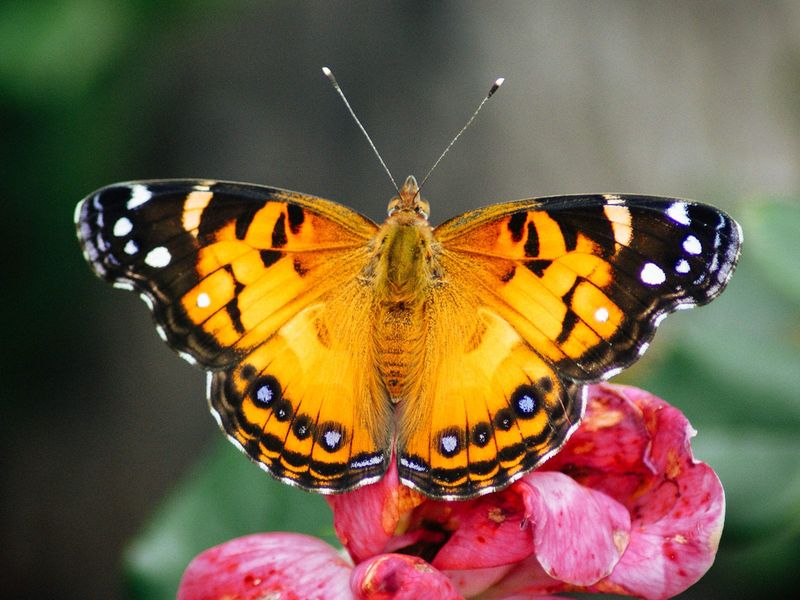
Spring marks their first appearance after overwintering, with peak activity occurring from May through October. Unlike Monarchs, American Ladies don’t make long-distance migrations but move northward in stages as generations progress.
In southern regions, you might spot them year-round thanks to continuous breeding in warmer climates.
8. What Do American Lady Caterpillars Eat?
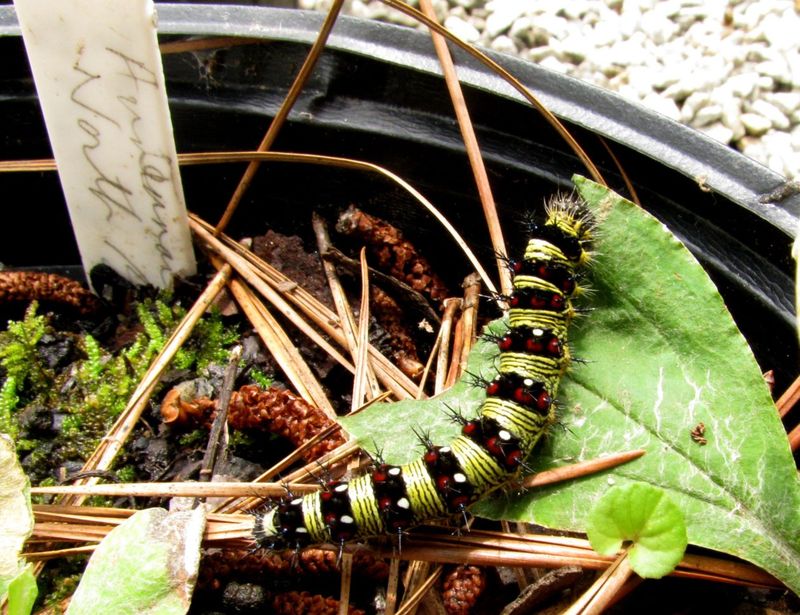
Pussytoes (Antennaria) plants serve as the primary host for egg-laying females. The spiky caterpillars also thrive on everlastings, pearly everlasting, and various plants in the aster family.
Watch for characteristic silk nests these caterpillars create by pulling together leaves as protective shelters while they feed.
9. How American Lady Butterflies Move And Interact
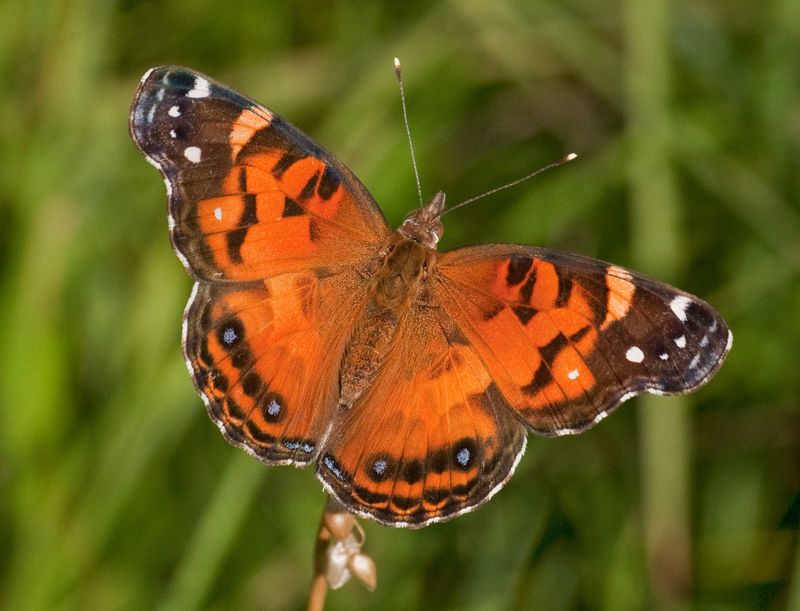
Males patrol territories from perches, darting out to investigate passing butterflies or potential mates. Their flight pattern appears quick and erratic compared to other similar species.
When feeding, they fully extend their long proboscis into flowers, often keeping their wings flat or slightly open rather than fully closed.
10. Life Cycle: From Egg To Butterfly
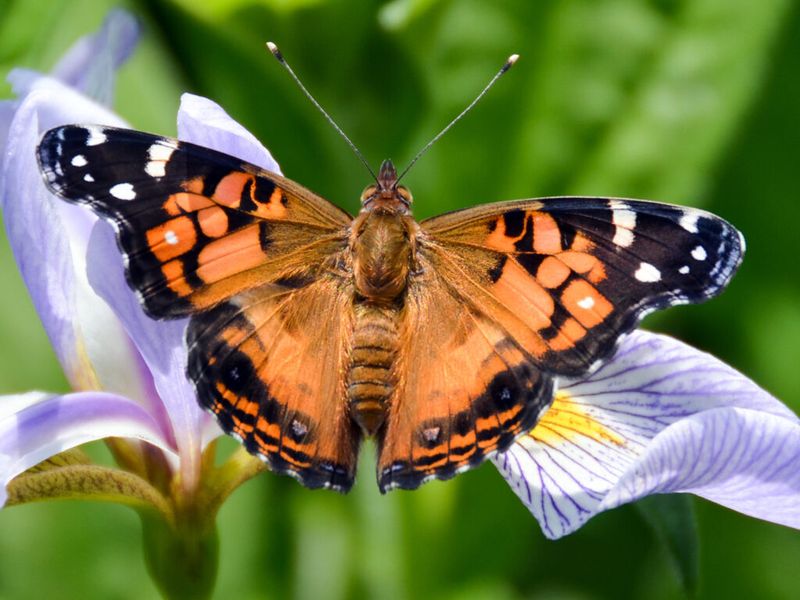
The transformation begins with tiny green eggs laid singly on host plants. Spiny black and yellow caterpillars emerge, growing through several molts inside protective leaf shelters.
After forming a chrysalis that hangs from plant stems, an adult butterfly emerges in about 10 days, completing its remarkable metamorphosis.
11. How To Attract American Lady Butterflies To Your Garden
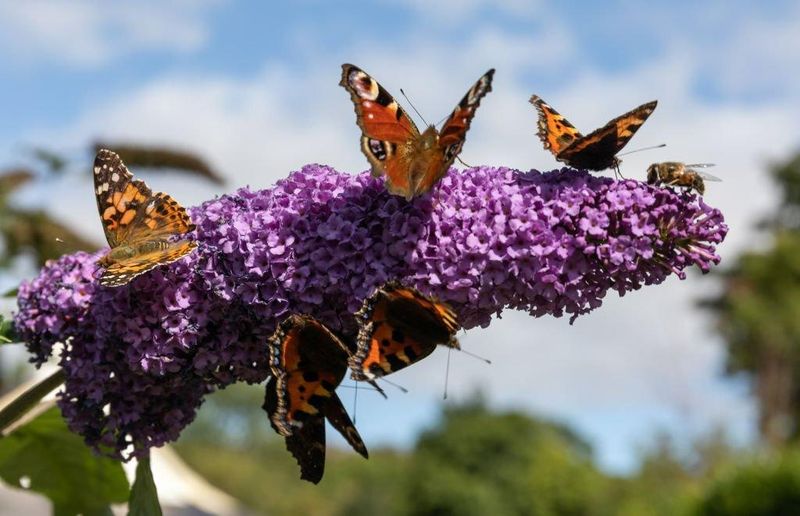
Plant native asters, especially pussytoes, to provide essential habitat for egg-laying females and hungry caterpillars. For adult butterflies, include nectar-rich flowers like zinnias, coneflowers, and butterfly bush.
Avoid pesticides in your garden – these chemicals harm butterflies at all life stages.
12. Common Lookalikes: Other Butterflies That Resemble The American Lady
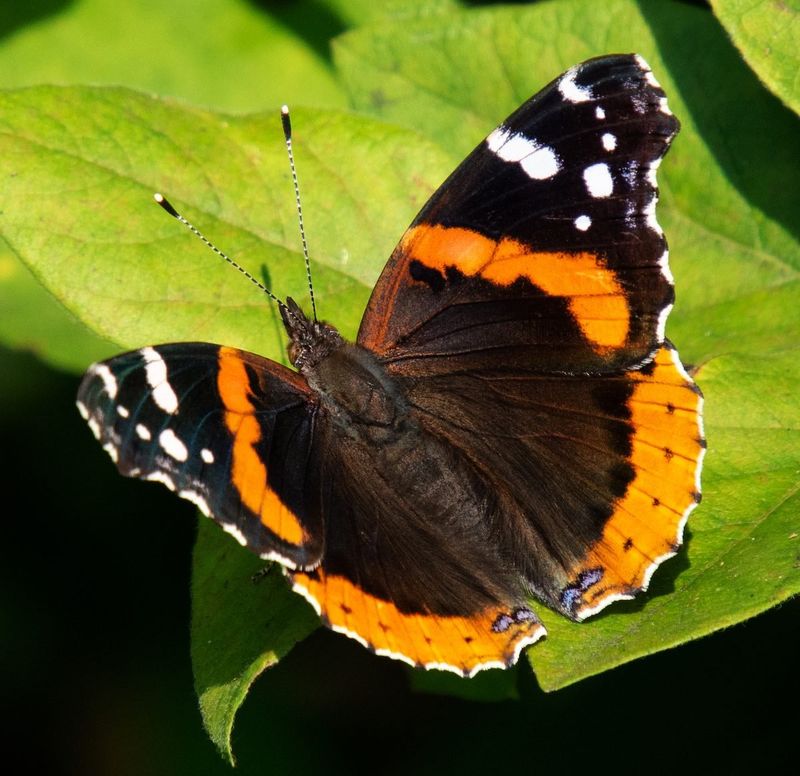
Beyond the Painted Lady, the Red Admiral shares similar coloration but features distinctive red bands across black wings. The Question Mark butterfly also displays orange and black patterns but has more angular wings with unique punctuation-like marks.
The Comma butterfly resembles the American Lady in flight but shows different wing shapes and underwing patterns.
13. Fun Facts About The American Lady Butterfly
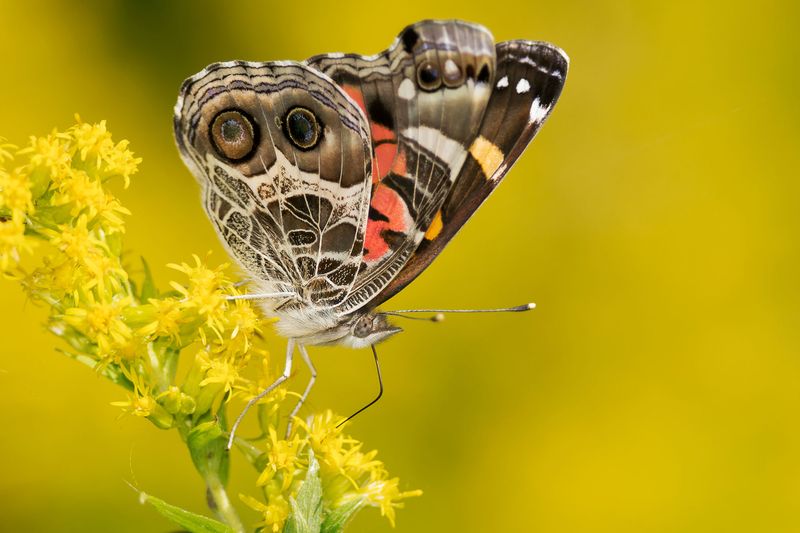
Despite their delicate appearance, American Ladies can fly at speeds up to 25 mph! Their caterpillars are architectural wonders, constructing silk tents by pulling together leaves for protection.
These butterflies can taste with their feet, helping females identify proper host plants by simply landing on them.

